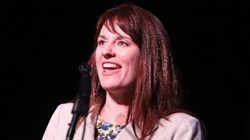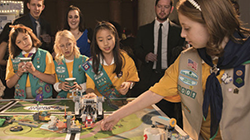INSPIRATION IS EVERWHERE
Featured Image
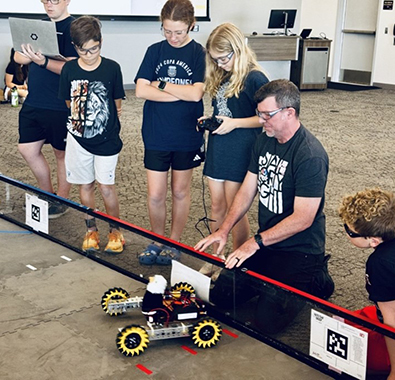
Display Title
Extending hands-on STEM beyond the Project Lead the Way classroom
Sub Title
Brian Martin
FIRST Educator & Mentor
For more than a decade, Brian Martin, a STEM teacher and robotics team mentor, has leveraged FIRST® to offer intensive afterschool robotics programming that builds on what students learn in-classroom through Project Lead the Way. Martin is one of thousands of U.S. teachers and administrators who are using the two programs together to engage and empower the next generation of STEM leaders and innovators.
“My administration was all for Project Lead the Way, but it was robotics through FIRST that created identity and tied into workforce development.”
Brian Martin has long known the power of combining STEM solutions to create life-changing impact for his students. A lifelong educator, he was initially introduced to FIRST in 2010 when he became the head of the science department at Temecula Preparatory School in Temecula, California, and saw how the afterschool robotics program built up students’ excitement in STEM (science, technology, engineering, and math).
When he joined the Palmdale Aerospace Academy in 2012, administrators were just adding Project Lead the Way to the school’s program. As a Title 1 school, 87% of Palmdale students received free or reduced lunch and only 11% of students’ parents had finished college. Martin, having participated in FIRST before, knew it was an important moment in which to implement more intensive, after-school robotics programming to extend what students would learn in-classroom through Project Lead the Way – providing stronger pathways to higher education and STEM careers.
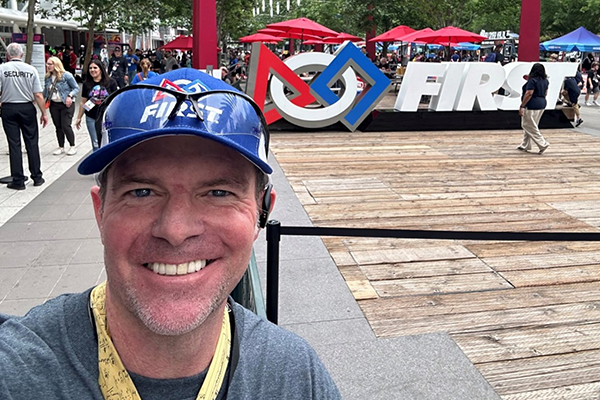
Educator Brian Martin at FIRST Championship
Martin is one of thousands of educators and administrators across the U.S. who are tapping into the power of FIRST to amplify Project Lead the Way curriculum and in-classroom activities. The foundational belief of FIRST that there is a place for every student in STEM is core to its work to prepare the young people of today for the world of tomorrow through team-based PreK-12 robotics challenges. Organizations like Project Lead the Way share this belief with FIRST, leveraging classrooms nationwide to engage students who otherwise might not voluntarily opt into STEM learning opportunities and to further fuel a love of science and technology in those who do. These two like-minded organizations understand the potential that lives inside every young person. When FIRST is used as extracurricular programming complementary to Project Lead the Way’s in-classroom curriculum, educators can go even further to engage and empower young innovators.
Using robots to build young people with FIRST
FIRST has always been More Than Robots® – beyond technical skills, the program gives students the skills, confidence, and resilience to build a better world through the reinforcement of six FIRST Core Values:
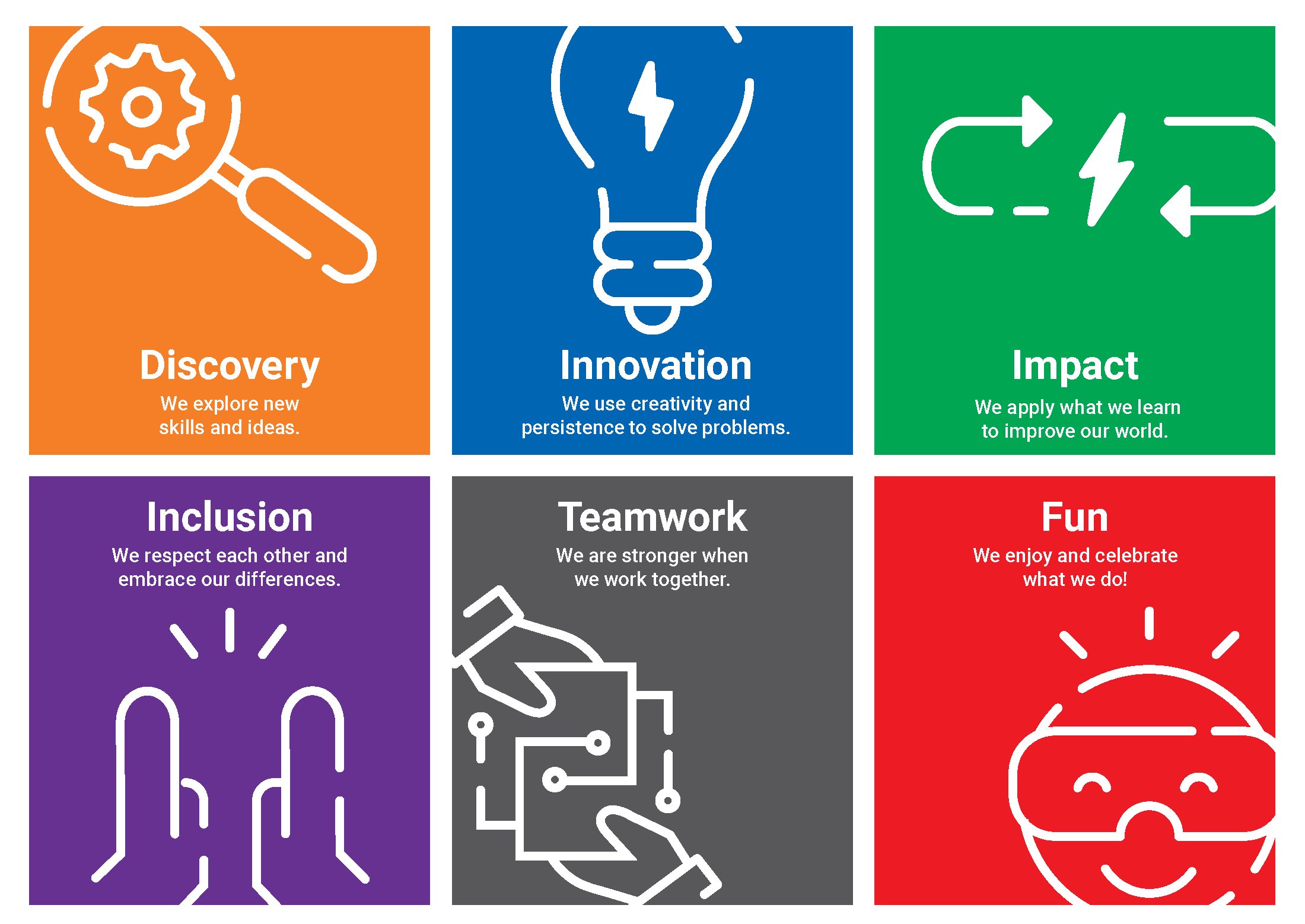
FIRST Core Values
The FIRST Core Values apply to many of the Career Technical Education Career-Ready Practices as defined by Advance CTE, and their constant practice is what enables the FIRST vision: to transform our culture by creating a world where science and technology are celebrated and where young people dream of becoming STEM leaders. The FIRST Classroom to Career resources and industry certification library help students bridge the gap from curiosity to career confidence by expanding their understanding of the professional options and certifications at their fingertips.
By extending student learning beyond the classroom through hands-on learning opportunities, providing exposure to careers and adult mentors, working as teams on real-life problems, celebrating STEM, and engaging young people in thrilling competition, FIRST better prepares its students to find success both in-school and in the workforce. By their fourth year of college, FIRST alumni are 3.5 times more likely to be majoring in computer science and 2.5 times more likely to major in engineering than their non-FIRST peers. The impact is particularly strong for young women in FIRST, who are 48% more likely to declare a major in engineering or computer science and show significant gains in STEM interest, career interest, activity, knowledge, and identity over their female peers.
Supporting teachers in building classroom STEM success
Project Lead the Way, which offers curriculum and educator professional development to help schools address learning gaps and meet their STEM goals in the classroom, engages its network by leveraging philosophies that closely align with the values and learning priorities that drive FIRST programs. Project Lead the Way engineering and computer science courses engage students in interdisciplinary activities that build technical knowledge and skills and empower them to develop their problem-solving, critical and creative thinking, communication, collaboration, ethical decision-making, and perseverance.
Educators and administrators value Project Lead the Way for the breadth of its in-classroom science and engineering curriculum, structure and support system, yet too few are aware of its synergies with FIRST. Supplementing Project Lead the Way’s in-classroom STEM curriculum with FIRST as an after-school enrichment program allows for more innovation, divergent thinking, and additional real-world application of STEM and business principles that can help them in the future.
“By using FIRST to really drive home Project Lead the Way curriculum, educators can position robotics as a capstone-like authentic experience that allows students to take their learning so much further,” said Vinnie Rodino, senior director of school engagement at FIRST. “In FIRST, the impetus is on the students to be the experts, not the educator, and offering FIRST as a career and technical supplement can help surpass traditional classroom instruction and bolster educators’ efforts to hit school or district STEM KPIs.”
FIRST programs’ outputs are closely aligned with the goals of Project Lead the Way curriculum and build on many of the same technical and interpersonal skill learning outcomes. And, FIRST enables a progression of skill learning across different team roles, many of which help students gain work-based learning skills and help them pursue industry certifications – a key output within Project Lead the Way.
FIRST helps Project Lead the Way students reach their goals by:
- Building competencies with introductory skills to advanced skills that work towards jobs and industry certifications.
- Integrating work-based learning through job roles on a team where skill development results in increased technical skills and teamwork creating more impact for the team.
- Using industry technology and experts that provide experiences to students of projects they see in future industries.
- Providing pathways for students to explore their career interests by defining their own learning goals and steps to accomplish those goals.
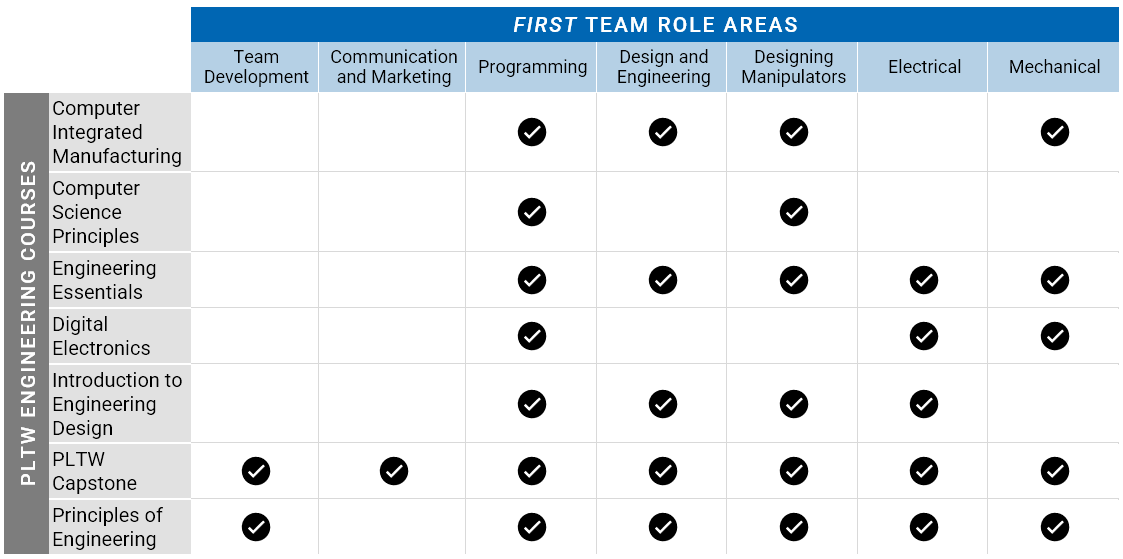
Project Lead the Way (PLTW) Courses Aligned with FIRST
Extending student and educator outcomes
Martin, the educator, is set to coordinate his fourth integration of FIRST and Project Lead the Way as he prepares to join a new school in Phoenix, Arizona, for the 2024-2025 school year. Looking back on his initial decision to layer FIRST on top of Project Lead the Way curriculum a dozen years ago, he says the integration and benefits were easy to see.
“Please, if you’re thinking about supplementing Project Lead the Way’s robotics offering, don’t use anything but FIRST.”
“The FIRST model, with Gracious Professionalism® and Coopertition®…I didn’t have to be told twice, I was sold,” said Martin. “The collaborative nature of Project Lead the Way and the philosophy of FIRST fit perfectly. It was a slam dunk in terms of seeing the connections.”
At Palmdale Aerospace Academy, Martin quickly built FIRST® Robotics Competition Team 5012 "Gryffingear" into a competitive squad that made it to FIRST Championship in its rookie year. In 2015, with sophomores as its oldest students, Gryffingear became the youngest team ever to be part of the winning Alliance at FIRST Championship. The powerhouse team qualified for seven consecutive years. Under Brian’s watch, about 60% of Gryffingear graduates went into STEM fields and 80% went to four-year colleges.
“Project Lead the Way is a fantastic vehicle for teaching 21st century skills like adaptability, entrepreneurism, and the ability to present information, but layering FIRST on top of that curriculum is what gets kids excited and engaged. It gives them identity, amps up their workforce readiness, and encourages them to create impact in their communities. FIRST is the community outreach vehicle, the promotional vehicle...it’s the tool that gets kids excited and makes them marketable to future employers.”
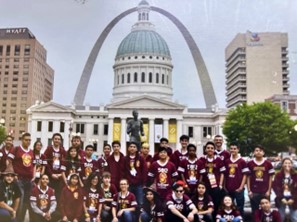
The Gryffingears at the 2015 FIRST Championship
And, Martin explains, the ways in which FIRST encourages students to be positive forces in their communities creates public good and local awareness that reflects well on students and school alike. It also creates visibility among local industry that can result in deeper education-corporate partnership that supports skill development, mentorship, and career readiness.
“With the right pitch, getting FIRST off the ground is easy,” said Martin, who offers several pieces of advice to interested educators and administrators:
-
Show, don’t tell. To start the process of securing buy-in, Martin recommends teachers invite their administrators to a local FIRST event. “In many ways, administrators need to see something in action to get excited about it,” said Martin. “Being successful from the start requires having a teacher who can serve as a champion and take the lead by creating opportunities to not only expose administrators to the types of community celebrations made possible through FIRST, but to flaunt every achievement in their own program as they get started, no matter how small. If you do that, more support will follow.”
-
Sell it like sports. Martin, whose first administrator role was as an athletic director, recommends treating the addition of robotics like one would a new sports team. “It’s just taking an existing format and precedent and applying it to FIRST, but some people struggle to make that connection if you treat it any other way,” said Martin. He also recommends taking this approach when seeking parental support and that of funders and sponsors.
-
Budget accordingly. “Once you sell in the merit of what these kids are capable of, which FIRST does in spades, you need to line-item your budget,” said Martin. “Go beyond the consumables and durables – include things like registration, tooling, and machine maintenance, as well as operations and coach stipends.”
-
Tap into school counselors. Martin recommends robotics coordinators prioritize building their relationships with school counselors to help them understand the benefits of FIRST for the students they counsel. Emphasizing how the program builds student engagement, reinforces academic competencies, and provides access to scholarships are among his favorite talking points.
-
Engage parents. Across his handful of Project Lead the Way schools, Martin has encountered varying cultures and attitudes toward parental involvement in student learning. By engaging parents, educators can not only supplement their own bandwidth but also build more support, momentum, and sustainability for both FIRST and in-classroom engineering curriculum, much to administrators’ excitement.
-
Bring in the experts. Martin appreciates the opportunity FIRST provides to take Project Lead the Way-learned competencies like programming languages and turn them into something more challenging. But he acknowledges, educators can’t be the experts in everything – and in FIRST, they don’t have to be. Parents can be a good source of professional knowledge, and he recommends tapping into the FIRST ethos of community to connect with industry partners, be they corporations, local businesses, military branches, or other STEM-reliant organizations
As Martin prepares for the upcoming academic year and introducing FIRST as a complement to Project Lead the Way at his new school, he’s already hard at work creating structure and focus for its early-days engineering program. As he brings in grant money, facilitates educator training, and ramps up parent engagement, he says his administrators are impressed even this early in the process. His response? “Just wait until you see us show up at our first event – this is just the tip of the iceberg.”
“Layering FIRST on top of [the PLTW] curriculum is what gets kids excited and engaged. It gives them identity, amps up their workforce readiness, and encourages them to create impact in their communities.”
Explore resources for FIRST educators at firstinspires.org/educators.
